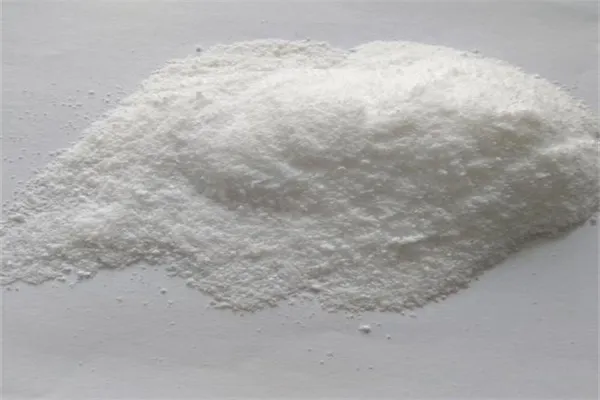Silicon dioxide, commonly known as silica, is a versatile compound that plays a crucial role in various industries and everyday products. This article provides an in-depth exploration of silicon dioxide, covering its properties, natural sources, industrial applications, health and environmental impact, production methods, and recent advancements.
Introduction to Silicon Dioxide
Silicon dioxide may sound like a fancy term, but fear not, it’s just a fancy way of saying good old silica. This rock-star compound can be found in everything from your morning toothpaste to the glass screen you’re probably reading this on. Silicon dioxide is a naturally occurring compound. It’s made of silicon and oxygen. Both elements are abundant on our planet. If you’ve held a rock or touched sand, you’ve encountered silicon dioxide.

In fact, our bodies use silica to support the development of our bones, connective tissues, and more.
Where do we find silicon dioxide?
We find silicon dioxide naturally in many foods and beverages. For example:
- Bananas
- Eggs
- Fish
- Grains
- Green beans
- Leafy greens
- Milk
- Water
We find silicon dioxide added to foods and products. For example
- Salt
- Spices
- Sugar
- Cosmetics (e.g., powders)
Why is silicon dioxide added to foods and products?
Silicon dioxide works as an anti-caking agent, and manufacturers add small amounts to some foods, cosmetics, and more to prevent products from clumping and binding together.
Why do we need anti-caking agents like silicon dioxide?
Many foods and products readily absorb water or oils. The absorption of this water or oil can cause products to clump together and, in some cases, become unusable. Clumping is especially troublesome for cake mixes, flour, sugar, table salt, and many other granular food products with crystalline structures.
When these crystalline structures absorb water or oils, they can create a liquid bridge that forms into a crystal bridge. This crystal bridge binds the food product together, making it difficult to use.
You may have noticed that some restaurants add rice to the salt in their salt shaker, or maybe you’ve seen people add rice to brown sugar. Adding rice to an ingredient is a low-cost and small-scale way of adding additional clumping protection to foods because the rice absorbs excess moisture and protects the foods from the above clumping process.
Manufacturers add small amounts of anti-caking agents like silicon dioxide to products they want to keep free-flowing. These anti-caking agents coat individual particles, thus separating the particles from each other so a crystal bridge does not form and cause clumping.
Is there a difference between silicon dioxide, SAS, and E551?
Manufacturers can make silicon dioxide known as synthetic amorphous silica (SAS). If SAS meets specific quality standards, manufacturers may use it as a food additive. The European Food Safety Authority (EFSA) identifies SAS in its system as E551.
Our bodies recognize and process naturally occurring silicon dioxide and SAS or E551 in the same ways because they are chemically identical.
Can silicon dioxide harm our health?
Inhaling a large amount of small particle silicon dioxide, like in manufacturing situations, can adversely impact our health.
Otherwise, silicon dioxide is safe to use and consume in normal quantities. As always, the dose makes the poison.
What about nanoparticle-sized silicon dioxide?
Naturally occurring and human-created silicon dioxide and SAS may come in nanoparticle size.
For perspective, there are 1,000 nanometers in 1 micrometer → 1,000 micrometers in 1 millimeter → 1,000 millimeters in 1 meter. Check out the free online app Scale of the Universe to see a nanometer in scale with similar objects.
Presently, no evidence suggests that consuming and using products with manufactured nano-sized silicon dioxide produces adverse health effects. However, researchers continue to review the safety of manufactured nanostructured silicon dioxide additives.
Definition and Chemical Composition
Simply put, silicon dioxide is a compound made up of silicon and oxygen atoms. Its chemical formula is SiO2. So, if you ever feel the need to impress someone with your knowledge of chemistry, just drop the SiO2 bomb.

Is there a difference between silicon dioxide, SAS, and E551?
Manufacturers can make silicon dioxide known as synthetic amorphous silica (SAS). If SAS meets specific quality standards, manufacturers may use it as a food additive. The European Food Safety Authority (EFSA) identifies SAS in its system as E551.
Our bodies recognize and process naturally occurring silicon dioxide and SAS or E551 in the same ways because they are chemically identical.
Can silicon dioxide harm our health?
Inhaling a large amount of small particle silicon dioxide, like in manufacturing situations, can adversely impact our health.
Otherwise, silicon dioxide is safe to use and consume in normal quantities. As always, the dose makes the poison.
What about nanoparticle-sized silicon dioxide?
Naturally occurring and human-created silicon dioxide and SAS may come in nanoparticle size.
For perspective, there are 1,000 nanometers in 1 micrometer → 1,000 micrometers in 1 millimeter → 1,000 millimeters in 1 meter. Check out the free online app Scale of the Universe to see a nanometer in scale with similar objects.
Presently, no evidence suggests that consuming and using products with manufactured nano-sized silicon dioxide produces adverse health effects. However, researchers continue to review the safety of manufactured nanostructured silicon dioxide additives.
Definition and Chemical Composition
Simply put, silicon dioxide is a compound made up of silicon and oxygen atoms. Its chemical formula is SiO2. So, if you ever feel the need to impress someone with your knowledge of chemistry, just drop the SiO2 bomb.
In conclusion, silicon dioxide stands as a fundamental component of numerous products and processes, from construction materials to pharmaceuticals. Its unique properties and diverse applications make it a cornerstone of modern industry and innovation. As researchers continue to explore new avenues for utilizing this compound, the future holds exciting possibilities for the further advancement of silicon dioxide technology.